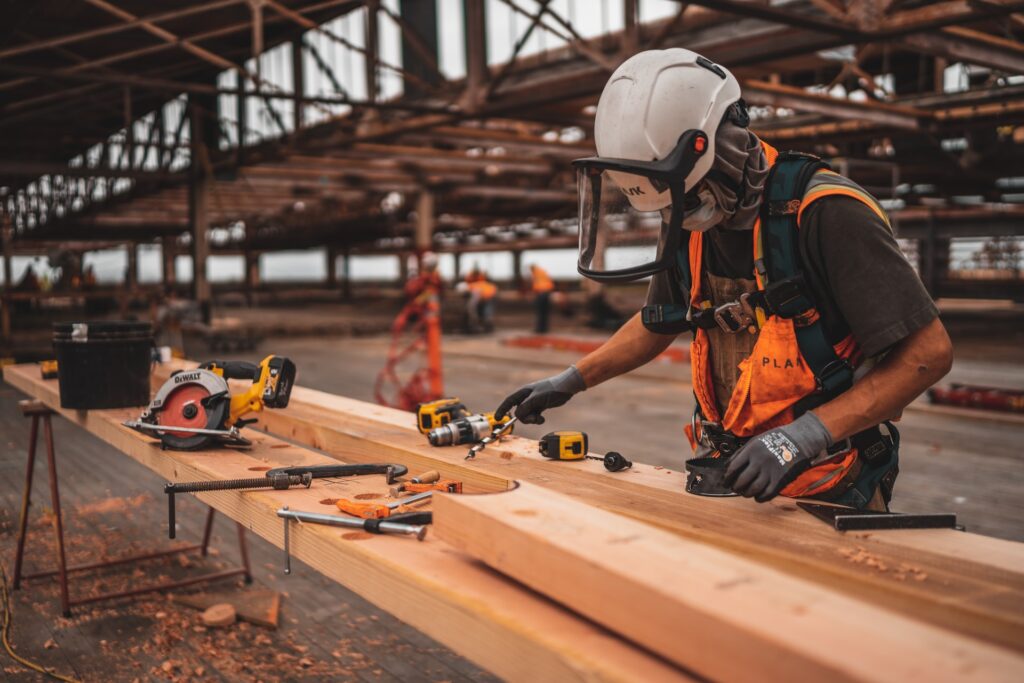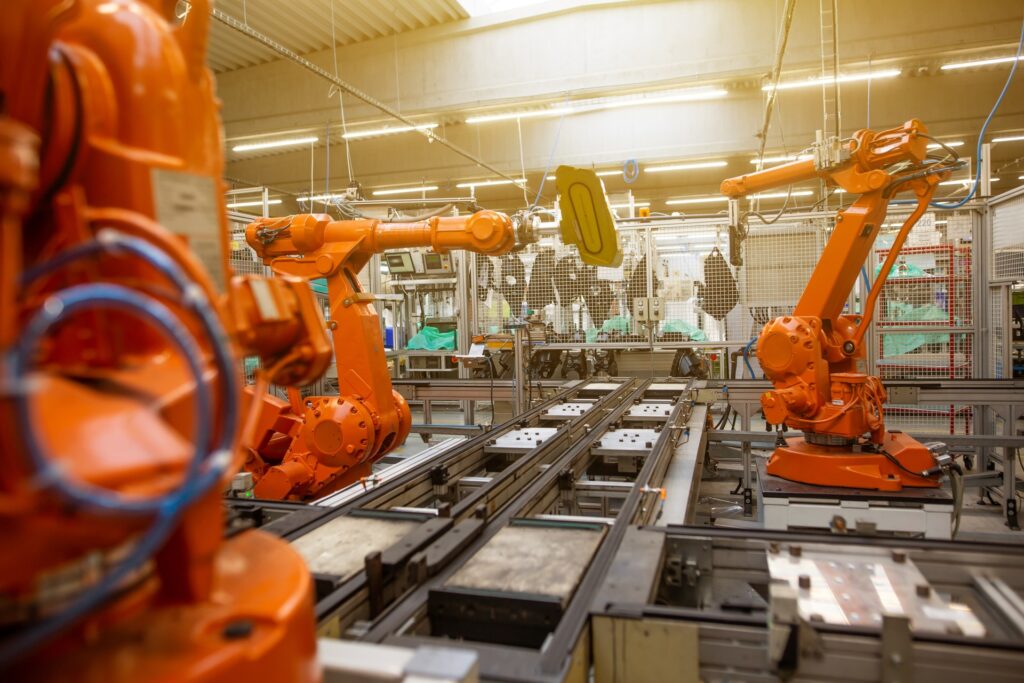
Top 9 Construction Trends In 2022
While the COVID-19 pandemic created a considerable amount of turbulence that result in forecasts being adjusted and expectations changing, it’s estimated that 2022 will be a strong year within the construction industry that will be marked by substantial growth. While the labor shortages and increasing construction costs that existed over the past two years still remain, the industry is starting to adapt and develop new ideas that are much more competitive. There have also been more stringent guidelines and regulations put in place to help lower the margin for waste and error.
Many of the latest industry trends are centered around technology, which can help firms improve their construction sites, profit margins, and ability to win certain projects. These trends tend to cause the market to shift, which is why any construction firm that wants to garner long-term success should know what these trends are and how to utilize them.
When the COVID-19 pandemic was in full swing, construction firms were tasked with changing how they approached meetings with clients, scheduling, closing projects, and hiring workers. While it took some time for construction firms to properly manage the issues brought about by the pandemic, the industry as a whole has changed how it does business.
The many construction industry trends that denote these changes include everything from a higher adoption of construction technologies to the use of modular and offsite construction techniques. This article provides you with a detailed overview of the nine construction trends for 2022.
9. Protective Equipment
Protective equipment has become more important than ever in the construction industry. Because of the COVID-19 pandemic, construction site guidelines have been updated to adhere to state regulations that place an emphasis on safety protocols and cleanliness. This equipment also includes machines that are able to identify potential safety issues at the construction site while providing suggestions on how to mitigate these issues.

Some of the latest wearable innovations include work boots with WiFi functionality that alert other workers if a fall has occurred. Headsets are able to reduce the amount of noise pollution that workers must contend with, which keeps workers safer and more focused on their immediate surroundings. The increasing popularity of 3D printing has allowed for a reduction in transportation risks. This equipment and technology work together to create an industry that relies on protective equipment.
8. Construction Technology Adoption
As touched upon previously, the construction industry is set to have a high construction technology adoption in 2022. The most notable technological innovations for construction sites include robots that can handle a high number of construction-related tasks, noise pollution reducers, 3D printing for more affordable building materials, and environmental sensors that are able to detect wind, heat, and noise to provide warnings before a natural disaster or emergency occurs.
There are also some more advanced innovations that have become part of the construction industry over the past few years, which include smart contracts with blockchain technology, wearable technology in the form of augmented reality, building information modeling technology, and construction drones that produce thermal images and heat maps of the construction site.

7. Living Building Materials
Although this technology has yet to be widely adopted because of how new it is, living building materials are set to increase in popularity throughout the construction industry in 2022. There are certain building materials used in construction that are able to behave like living organisms, which include self-mending bio cement and self-replicating concrete.
There are very clear reasons why the construction industry will attempt to switch over to living building materials over the next decade. The supply chain that the construction industry depends on accounts for more than 10% of all greenhouse gas emissions in the world. The carbon that’s produced during construction processes amounts to nearly 30% of all greenhouse gas emissions from the construction industry. Materials like bio-cement are grown with biological materials as opposed to being formed with non-renewable materials. By using this approach, CO2 will be absorbed instead of emitted.
6. Virtual Construction
Virtual construction is centered around visualization and virtual design. Keep in mind that reworks of incorrect or faulty builds account for almost 30% of all construction industry costs, which is why it’s essential to keep build errors at bay. There are a range of different technologies that allow the construction industry to implement virtual construction in certain regards, the primary of which is construction management software.
With VDC software, it’s possible to visualize structures before they’ve been built. Once these virtual environments have been created, they can be viewed from smartphones or desktop computers. By viewing structures in a virtual environment, bad design approaches are mitigated by a considerable amount. Construction management software provides managers with the ability to store data, documents, and blueprints in a single location. With the right software, every member of the team could access this data at any time. This part of the industry is anticipated to grow by a CAGR of around 12.5% by 2027.

5. Connected Construction
Connected construction is able to support such initiatives as smart cities, climate change programs, and urban air mobility. It can also bolster internal operational efficiencies, increase margins, and reduce total construction costs. These technologies are able to put people, job sites, processes, and assets onto one network, which allows for less downtime and better visibility into operations.
This type of network is only possible with advanced and emerging technologies. Since the industry is set to move closer towards connected construction in 2022, it may be more important for construction firms to understand how to perform analytics and take action based on user insights. Keep in mind that automation will be a primary component within connected construction ecosystems.
4. Green Building
Green building is a type of sustainable construction that aims to make sure that every facet of the construction process is environmentally responsible. Green buildings are able to have a positive physiological and psychological impact on the wider environment as well as nearby inhabitants and passersby.
In today’s market, green construction has also become highly important for many buyers and renters. While the sustainable features needed to implement green building practices are still costly, sustainable construction becoming more popular means that these costs will be driven down over time.
Keep in mind that green construction involves the technologies that are used to make the building as well as how the resources are used. One element of green construction is greenscaping, which involves placing small parks and plant coverings on rooftops. This approach to construction has become increasingly popular over the past decade.

3. Modular and Offsite Construction
Modular and offsite construction is an aspect of the construction industry that’s set to reach a value of more than $100 billion by 2025. It’s believed that the increase in the modular construction market is largely driven by access to cost-cutting technology as well as a lack of labor.
This type of construction involves buildings being constructed in an off-site location where conditions are controlled and the same design standards as conventional construction sites are maintained. When buildings are constructed in modules, they can be quickly put together once the materials have been shipped to the construction site. These buildings can grow larger than ever with the latest technology. In fact, the CitizenM Bowery Hotel in NYC is the tallest modular project in the U.S. at 21 stories. The success of this project has created a rise in popularity for modular construction across New York.
2. Residential Projects
While residential projects have always been popular, many global construction firms are focusing more and more on completing residential projects. While mega-projects are still a focus for tech companies, construction companies like Skanska have stated that they aren’t going to be constructing large projects in the future and will be instead focusing on lower-risk arrangements in the form of residential projects. In 2021 alone, spending for residential construction increased by almost 25%. New residential construction is estimated to increase by an additional 7-8% in 2022.
1. Smart Cities
Likely the most significant construction trend for 2022 involves smart cities, which are being invested in by companies like Cisco, IBM, and Microsoft. These mega-projects are centered around building smart and sustainable cities that are wholly interconnected and built with the future in mind. By 2025, it’s estimated that this market will expand by an additional 20.5%.
At the moment, smart city mega-projects exist with the creation of Masdar City, which is located in the United Arab Emirates. A few additional examples include:
- Hudson Yards – NYC
- Songdo International Business District – South Korea
- Delhi-Mumbai Industrial Corridor – India
The smart cities that are currently being developed have price tags that extend from $20-$100 billion. Keep in mind that these projects are being developed to improve infrastructure, enhance environmental health, and bolster the economy.

Most of the trends mentioned in this guide are based on technology and the many advancements that come with it. While some trends like smart cities and living building materials still need to be proven, other trends like green building and modular construction have already been widely adopted across the industry. By using new technologies, implementing new practices, and putting money towards more advanced projects, developers and builders alike should be able to obtain higher profits and reduce project risk.

Jason Somers, President & Founder of Crest Real Estate
With over 15 years of professional experience in the Los Angeles luxury real estate market, Jason Somers has the background, judgement and track record to provide an unparalleled level of real estate services. His widespread knowledge helps clients identify and acquire income producing properties and value-ad development opportunities.
Learn more about Jason Somers or contact us.



